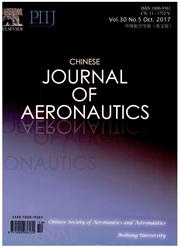

 中文摘要:
中文摘要:
LaTi2Al9O19 (LTA ) 作为新有点热的障碍涂层(TBC ) 展出有希望的潜力材料,由于它的优秀高温度的能力和低热电导率。在这份报纸, LTA/yttria 稳定了氧化锆(YSZ ) TBC 被大气的血浆喷洒生产。热腐蚀行为和涂层的相关失败机制被调查。LTA 的分解不甚至在 1 458 个热腐蚀周期以后发生在 1 373 K,揭示在 Na2SO4 和 NaCl 的熔融的盐的好化学稳定性。然而,熔融的盐渗透到契约上衣,引起在熔融的盐和契约上衣的热腐蚀的热地成年的氧化物(TGO ) 溶解。作为结果, TBC 裂开发生在氧化物层以内。在结论,陶器的材料 LTA 和 YSZ 表明在 Na2SO4 和 NaCl 的熔融的盐的好化学稳定性,和契约上衣在在 LTA/YSZ TBC 对热腐蚀为部件提供保护起一个重要作用。LTA 作为新奇 TBC 材料展出很有希望的潜力。
 英文摘要:
英文摘要:
LaTi2Al9O19 (LTA) exhibits promising potential as a new kind of thermal barrier coating (TBC) material, due to its excellent high-temperature capability and low thermal conductivity. In this paper, LTA/yttria stabilized zirconia (YSZ) TBCs are produced by atmospheric plasma spraying. Hot corrosion behavior and the related failure mechanism of the coating are investigated. Decomposition of LTA does not occur even after 1 458 hot corrosion cycles at 1 373 K, revealing good chemical stability in molten salt of Na=SO4 and NaCl. However, the molten salt infiltrates to the bond coat, causing dissolving of the thermally grown oxide (TGO) in the molten salt and hot corrosion of the bond coat. As a result, cracking of the TBC occurs within the oxide layer. In conclusion, the ceramic materials LTA and YSZ reveal good chemical stability in molten salts of Na2SO4 and NaCl, and the bond coat plays a significant role in providing protection for the component against hot corrosion in the LTA/YSZ TBCs. LTA exhibits very promising potential as a novel TBC material.
 同期刊论文项目
同期刊论文项目
 同项目期刊论文
同项目期刊论文
 Residual stress trend in thermal barrier coatings in through thickness direction measured by photolu
Residual stress trend in thermal barrier coatings in through thickness direction measured by photolu An impedance spectroscopy study of high-temperature oxidation of Gd2O3-Yb2O3 codoped zirconia therma
An impedance spectroscopy study of high-temperature oxidation of Gd2O3-Yb2O3 codoped zirconia therma Improved oxidation resistance and diffusion barrier behaviors of gradient oxides doped NiCoCrAlY coa
Improved oxidation resistance and diffusion barrier behaviors of gradient oxides doped NiCoCrAlY coa Mechanical Properties of LaTi2Al9O19 and Thermal Cycling Behaviors of Plasma-Sprayed LaTi2Al9O19/YSZ
Mechanical Properties of LaTi2Al9O19 and Thermal Cycling Behaviors of Plasma-Sprayed LaTi2Al9O19/YSZ Mechanical Properties of LaTi(2)Al(9)O(19) and Thermal Cycling Behaviors of Plasma-Sprayed LaTi(2)Al
Mechanical Properties of LaTi(2)Al(9)O(19) and Thermal Cycling Behaviors of Plasma-Sprayed LaTi(2)Al Microstructure and Thermal Properties of Plasma Sprayed Thermal Barrier Coatings from Nanostructured
Microstructure and Thermal Properties of Plasma Sprayed Thermal Barrier Coatings from Nanostructured HOT-CORROSION BEHAVIOR OF THERMAL BARRIER COATED DZ125 SUPERALLOY EXPOSED TO ATOMIZED SEAWATER AND K
HOT-CORROSION BEHAVIOR OF THERMAL BARRIER COATED DZ125 SUPERALLOY EXPOSED TO ATOMIZED SEAWATER AND K Thermo-Physical Properties and Thermal Shock Resistance of Segmented La2Ce2O7/YSZ Thermal Barrier Co
Thermo-Physical Properties and Thermal Shock Resistance of Segmented La2Ce2O7/YSZ Thermal Barrier Co Thermal shock resistance and mechanical properties of La2Ce2O7 thermal barrier coatings with segment
Thermal shock resistance and mechanical properties of La2Ce2O7 thermal barrier coatings with segment Thermo-physical and thermal cycling properties of plasma-sprayed BaLa2Ti3O10 coating as potential th
Thermo-physical and thermal cycling properties of plasma-sprayed BaLa2Ti3O10 coating as potential th Lanthanum-titanium-aluminum oxide: A novel thermal barrier coating material for applications at 1300
Lanthanum-titanium-aluminum oxide: A novel thermal barrier coating material for applications at 1300 Thermal cycling behavior and failure mechanism of LaTi(2)Al(9)O(19)/YSZ thermal barrier coatings exp
Thermal cycling behavior and failure mechanism of LaTi(2)Al(9)O(19)/YSZ thermal barrier coatings exp Cyclic oxidation and interdiffusion behavior of a NiAlDy/RuNiAl coating on a Ni-based single crystal
Cyclic oxidation and interdiffusion behavior of a NiAlDy/RuNiAl coating on a Ni-based single crystal Oxidation and diffusion barrier behaviors of double-layer NiCoCrAlY coatings produced by plasma acti
Oxidation and diffusion barrier behaviors of double-layer NiCoCrAlY coatings produced by plasma acti Microstructure and thermo-physical properties of yttria stabilized zirconia coatings with CMAS depos
Microstructure and thermo-physical properties of yttria stabilized zirconia coatings with CMAS depos 期刊信息
期刊信息
